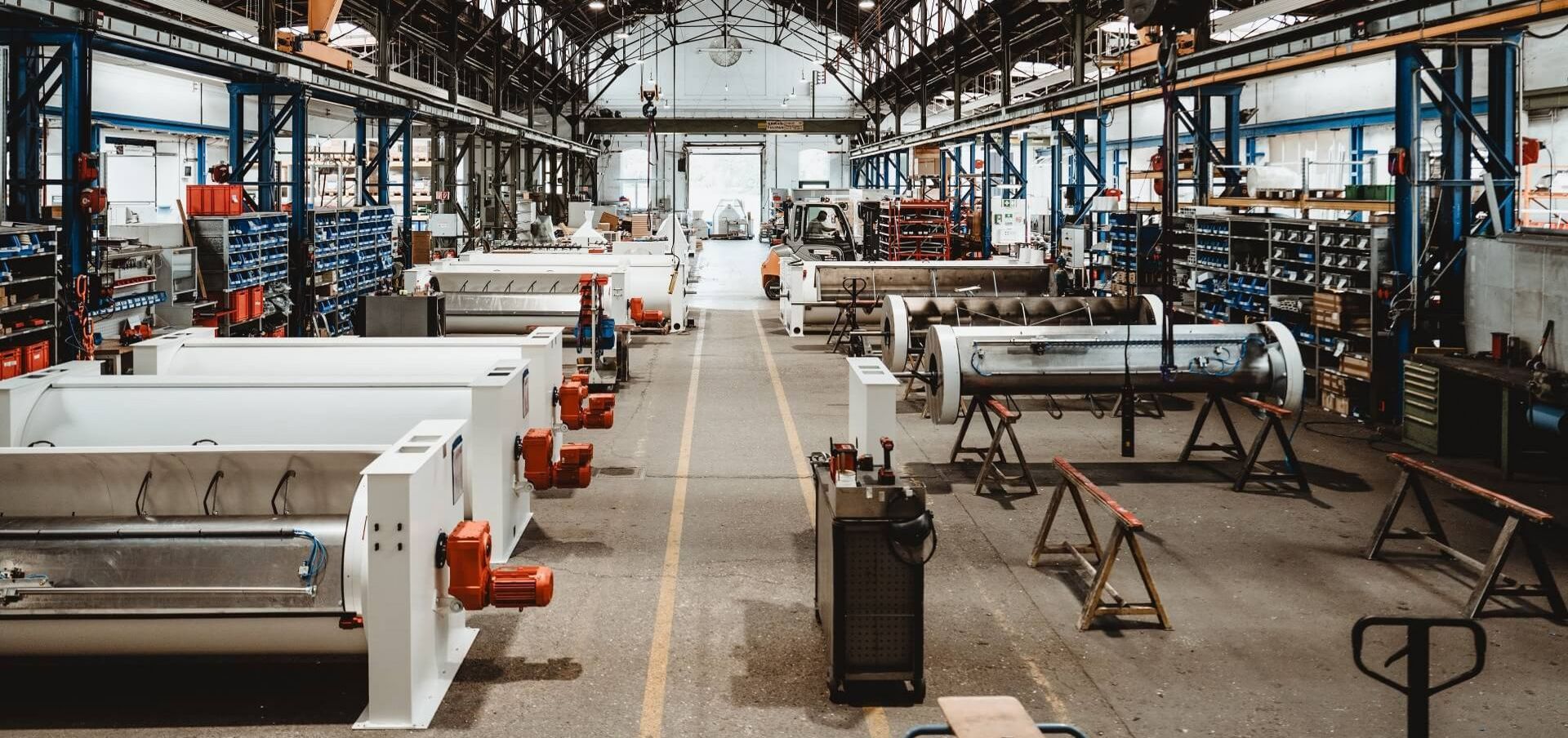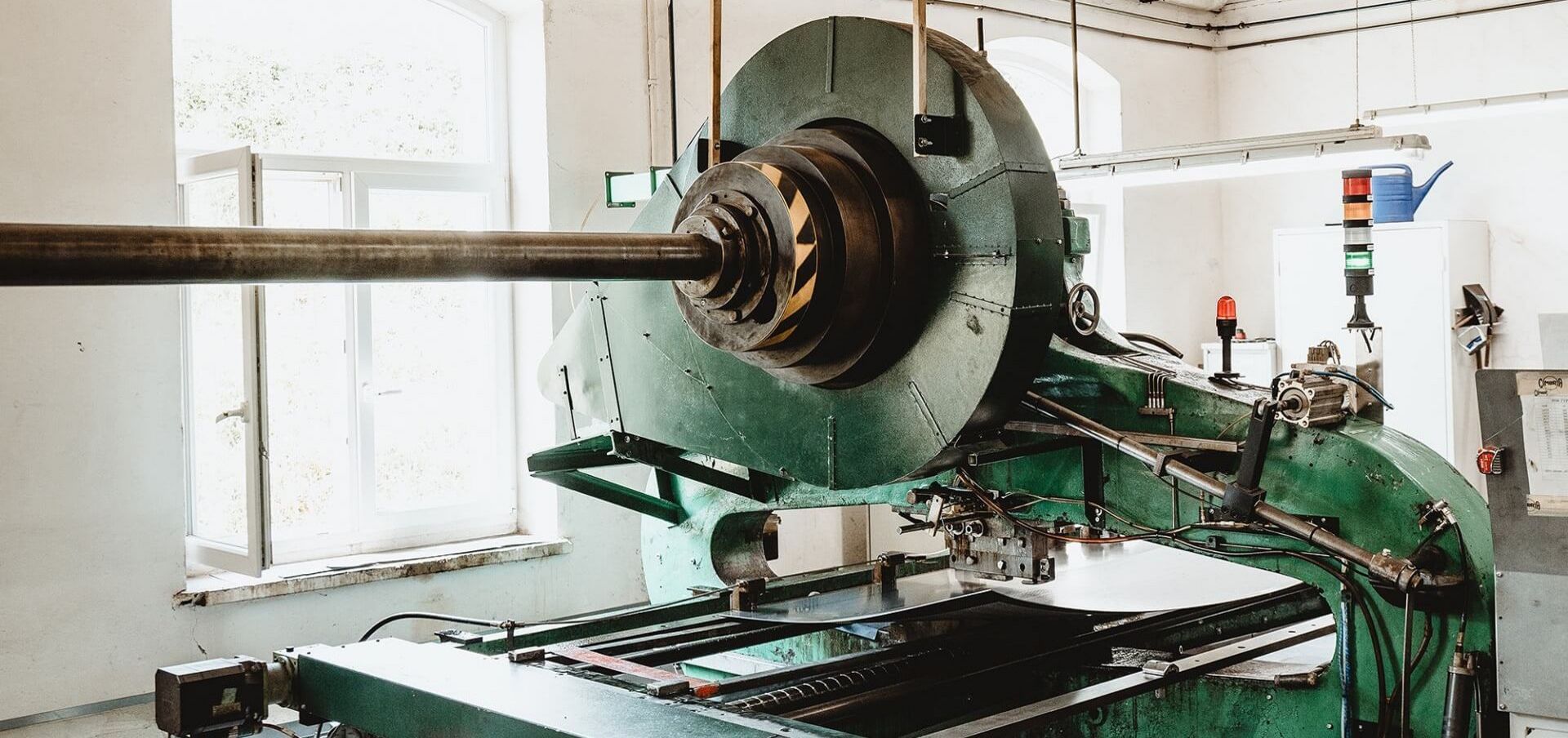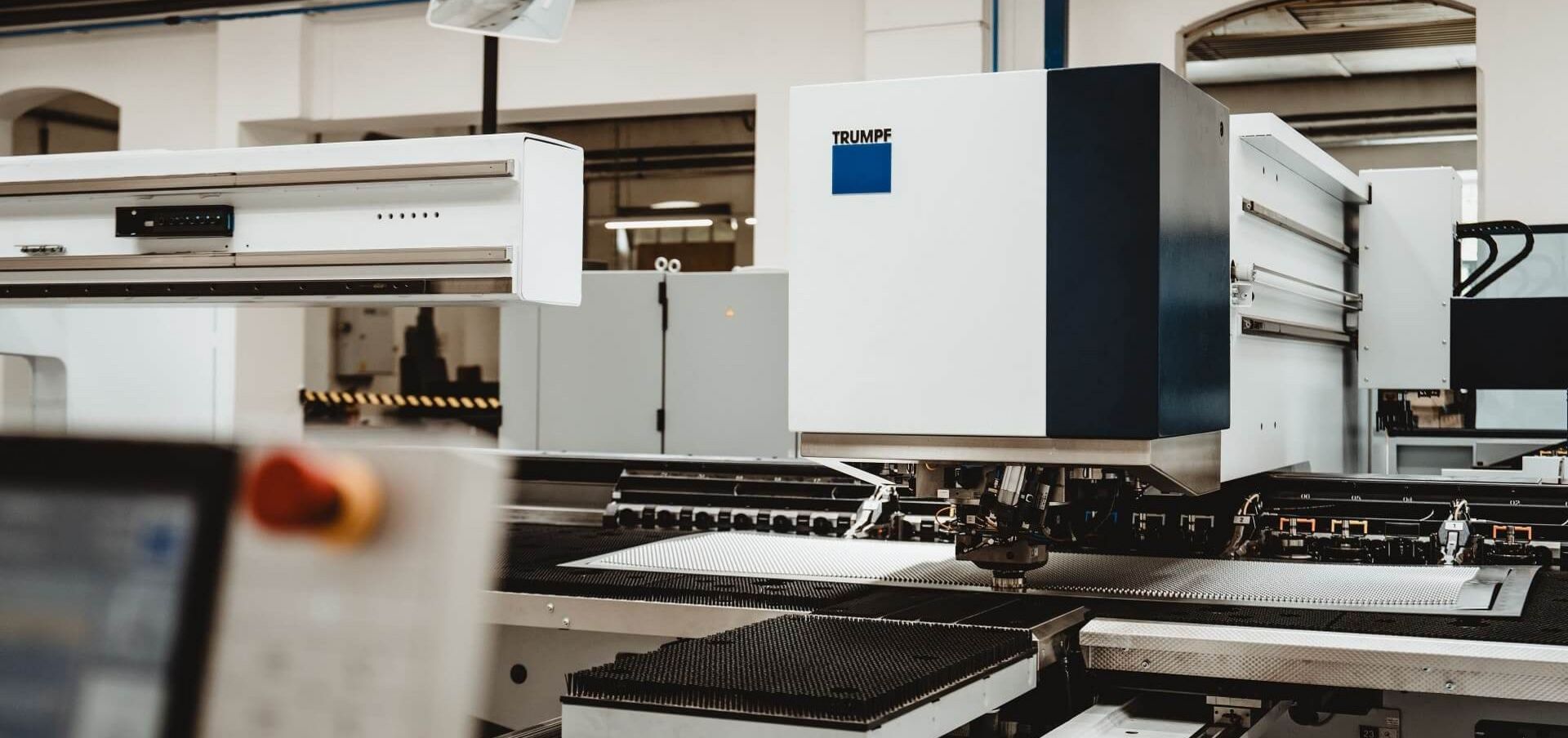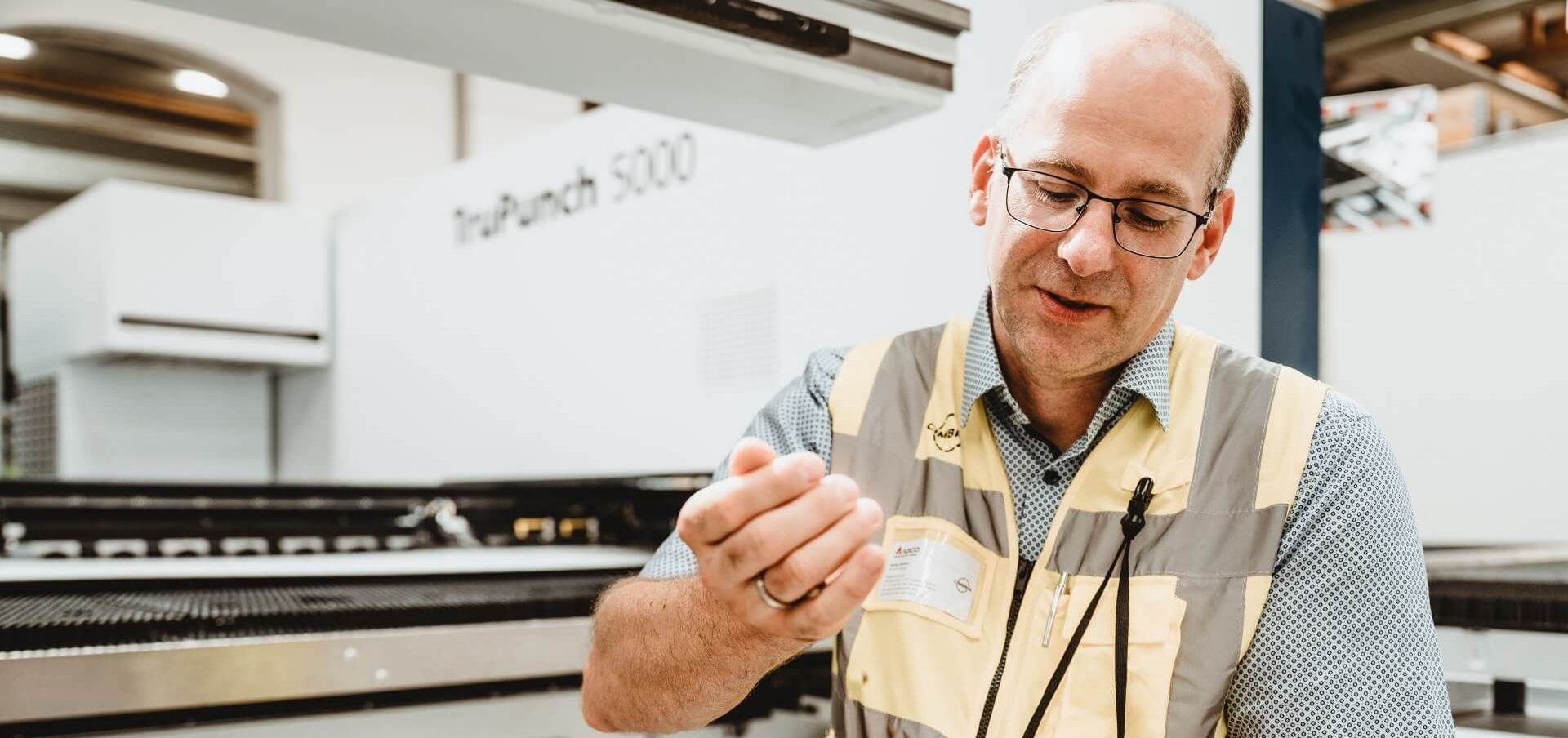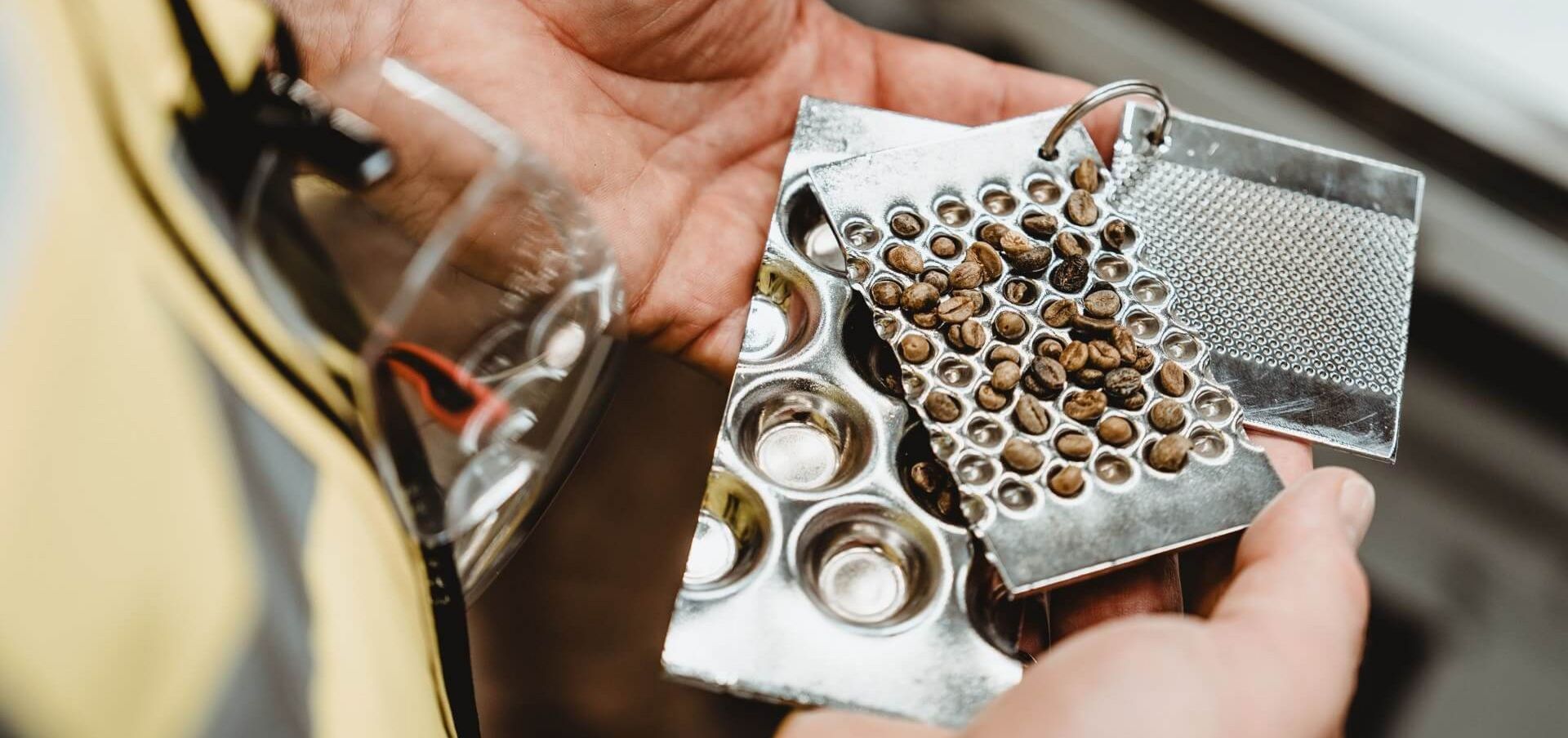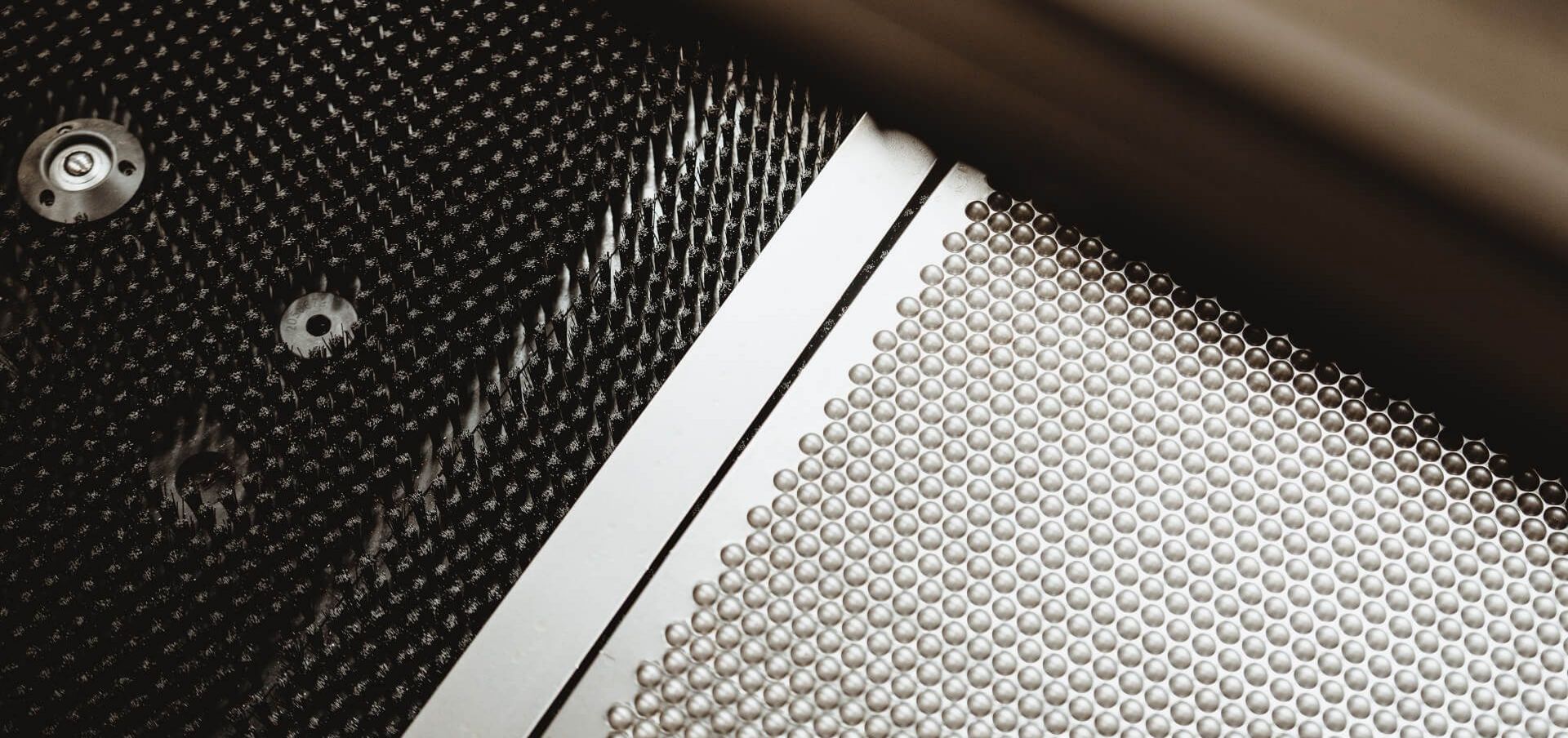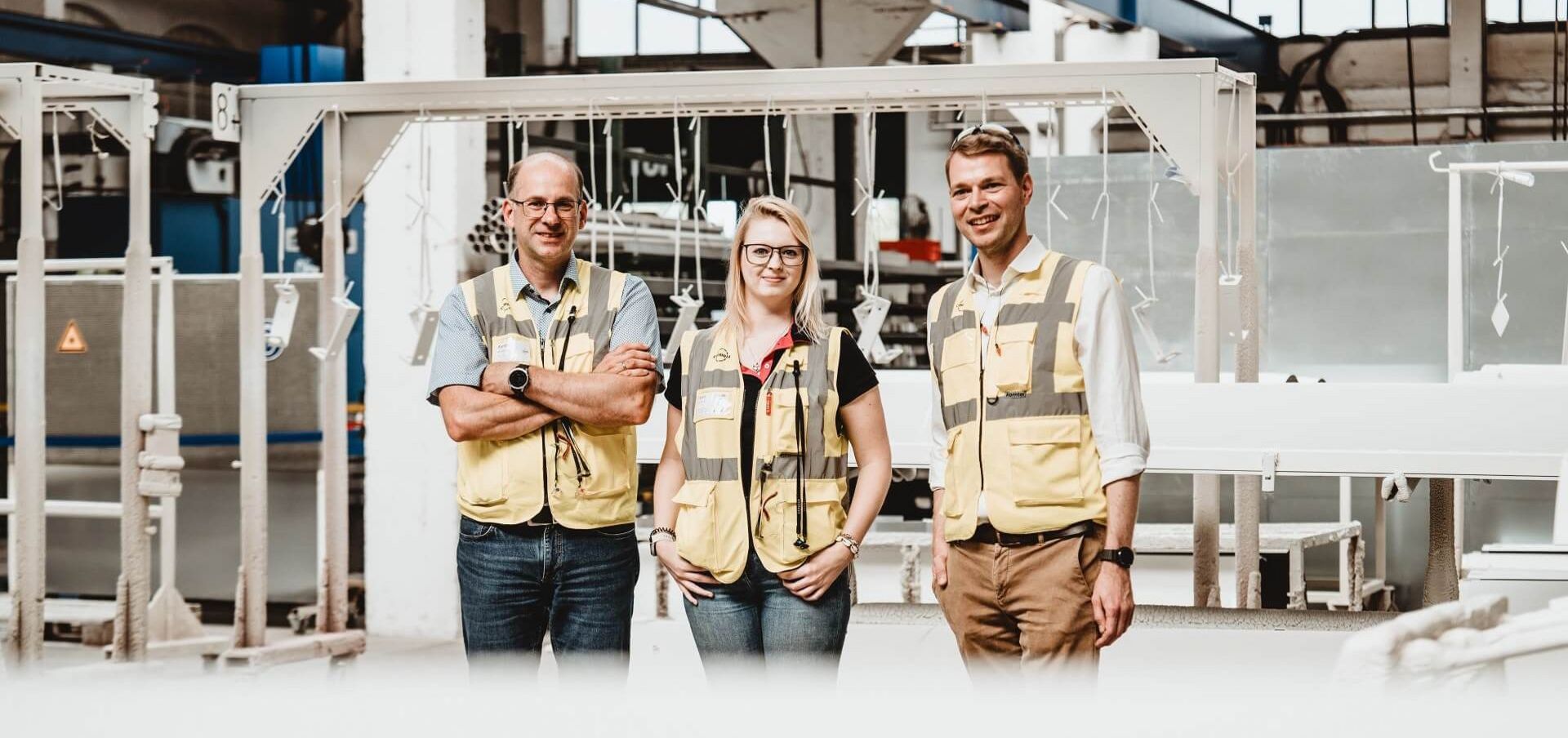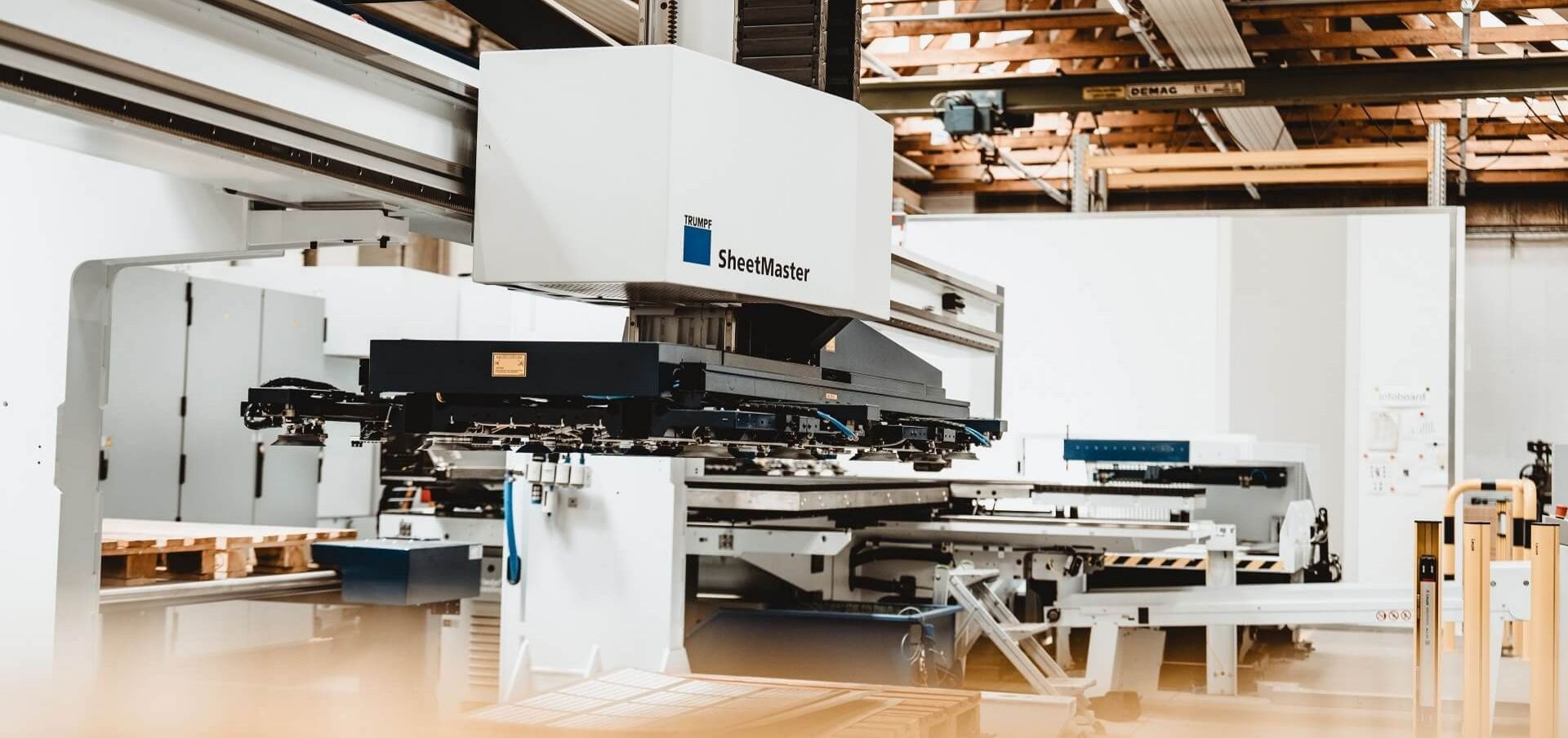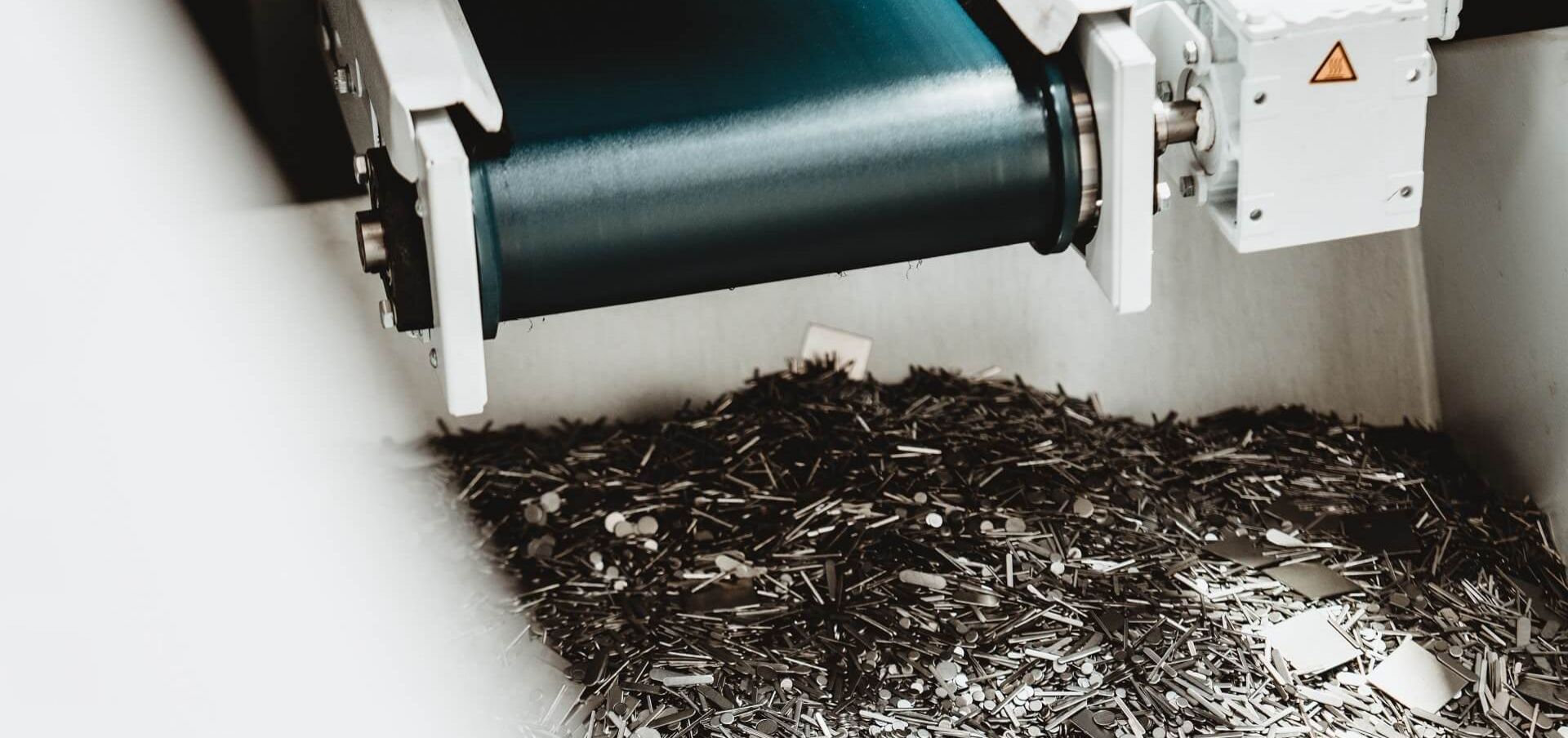The sheet that production workers have to carefully balance and clamp onto the old punching machine weighs 40 kilos. Row by row, the machine advances the sheet. The punching head lowers consistently, pressing the mould into the thin material to make twelve indentations, then more movement, twelve more indentations, and so on, covering two metres in one direction and two metres back, until the entire sheet is filled. The sheet that is created here will later be used to sort seeds. The technology is 130 years old, dating back to the early days of the Cimbria Heid company – and it is due to be retired soon.
AN INVESTMENT IN GREATER EFFICIENCY
Nikolaus Heid designed the punching machine back in 1894. Since then, the company has continually upgraded its technology. "But we had to confront the reality that, eventually, it would no longer be viable", explains Patrick Jansen, Director of Manufacturing at Cimbria. He plans to decommission two of the old punching machines by the end of 2024. "Of course, this is tinged with sadness," he says, "the machines are part of Heid's industrial history. But after 130 years, we also have to think about new technologies and the increase in efficiency they bring."
Heid Agrartechnik has been part of Danish company Cimbria since 1989. The punching machines are among the company's core technologies. "They process the metal sheets for a trieur, a machine that later sorts the grain or seed. That has always been one of our core competencies," says Patrick Jansen. The trieur sorts desired grains from unwanted grains. The sheets are later shaped into cylinders that rotate around a chute. The indentations in the tray, known as "pockets", hold the selected grain and transport it upwards, where it then drops onto the chute. Grains that do not fit into the indentations fall back out of the cylinder.
The indentations pose two challenges – their shape and the number of them on the surface. Different depths are required depending on the desired grain size, ranging from the smallest indentations for clover seeds to 28 millimetre holes for sunflower seeds. Not only is the mould round, it also takes on a teardrop shape depending on the goods to be sorted. Additionally, a separate mould is needed for each shape. "You can press a pocket relatively quickly and easily," explains Austrian plant manager Günther Schwarz. "However, pressing so many pockets onto a two-metre-long sheet presents a technical challenge."
In summer 2021, Patrick Jansen and Günther Schwarz began looking for alternatives to the old machines. It was not until September 2023 that they were able to put the new TRUMPF punching machine into operation. "The old machines were so revered that we couldn't even imagine a modern machine being able to process the sheet metal the way we needed", says Schwarz. Cimbria reached out to ten suppliers, but only TRUMPF remained in the running.
"In order to realise Cimbria's requirements, we made several trips to Cimbria Heid," says Peter Sternat, TRUMPF Sales Manager for Eastern Austria, "and Günther Schwarz also visited our Customer Center in Ditzingen." Together, they integrated the TruPunch 5000 into the existing machine park layout and developed the initial tool heads for the teardrop-shaped mould. "We've gradually become more aligned," says Sternat.
CUTTING-EDGE TECHNOLOGY IMPROVES CAPACITY
For Cimbria Heid, the new machine represents an increase in efficiency. The TruPunch 5000 now performs work steps that were previously handled by different machines. It punches the indentations into the sheet at up to 1,600 strokes per minute. Active blank holders prevent the material from swelling during the process, eliminating the need for any subsequent straightening. One function cuts the sheet to the desired size, another deburrs the cut edges, and embossing tools apply labels to the sheets.
The SheetMaster now handles the 40-kilo sheets, relieving the production employees of this task. The tool change for more than 50 tools is also automated. Cimbria Heid produces the complex segment plates for the trieur during the day so the results can be evaluated. At night, the machine produces simpler flat screens autonomously. "We can now utilise the machine much more effectively, and our team is thrilled with the new technology," says Patrick Jansen.
Cimbria Heid has accumulated some 450 punching heads for various grain and seed moulds over 130 years, and these heads are also needed for the new machine. "We test each individual tool to ensure that the sorting plates continue to meet our quality standards. This process still takes some time," explains Patrick Jansen. The fate of the old machines remains uncertain. However, the production manager is confident: "We will find a fitting place for them. Perhaps they'll find a new home in an industrial museum."
About the company
Heid and Cimbria joined forces to become Cimbria Heid. In 1872, Nikolaus Heid founded the company of the same name in the Eifel region. After moving to Lower Austria, he began developing machine tools and sorting machines for grain. In 1989, the Danish company Cimbria takes over Heid Agrartechnik. Cimbria is a world leader in the industrial processing, handling and storage of grain and seed as well as grain, animal feed, foodstuffs and other bulk products. Cimbria works closely with its customers to develop bespoke machines and complete turnkey solutions. The group has four production sites and around 900 employees, some 140 of whom work at the site in Austria.


